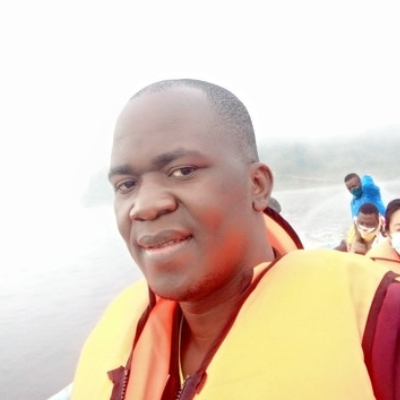There’s something about the name “Zanzibar” that makes people pause. It’s an incredible group of island with impressive views and sand beaches and now that you have heard about it, you want to go and experience it yourself but, you need to know where it is.
Maybe it’s because you’ve heard it in stories about dream honeymoons or seen it in travel magazines full of blue water and bright boats. It sounds exotic, like a place you’re supposed to know about, even if you can’t quite point to it on a globe. To be honest, a lot of people pretend they know exactly where Zanzibar is, but secretly wonder every time it comes up.
So, here’s the real story. Zanzibar is actually a small group of islands just off Africa’s east coast. Picture the continent’s right side, where it sweeps out into the Indian Ocean. Not far from the coast of Tanzania—only about 25 miles across the water—you’ll find Zanzibar sitting quietly, surrounded by that unbelievable ocean color you always see in postcards.
When someone says they went to Zanzibar, they’re usually talking about Unguja, the main island. It’s where most of the hotels are, where the famous Stone Town is, and where you see those endless stretches of beach. Pemba Island is a bit farther north, covered in deep green and much less crowded. There are also smaller islands nearby, but unless you’re into maps or sailing, you might not ever hear their names.
But all that information is almost beside the point when you finally get there. Imagine walking down the steps from your plane and getting hit with warm, dense air that smells like the ocean and something sweet you can’t quite name. Maybe you’re tired from flying, but in that moment you realize, you’re a long way from your usual routine. Even the light feels different, softer and brighter at the same time.
In Zanzibar, the details don’t come from looking at a map, but from what you feel the minute you arrive. Your feet on warm ground, the sound of distant voices and birds, and that quiet excitement of knowing you’re somewhere completely new. That’s when the question of where Zanzibar is finally gets answered—not with coordinates, but with your own senses, wide awake for the first time in a while.
The airport isn’t big. You’ll collect your bag quickly, and sometimes there’s a line for customs that feels like it moves slowly on purpose. People don’t rush much here. It can take a day or two to adjust if you’re used to everything happening instantly. Your driver—most hotels send one—might ask if you’re comfortable, if you want to stop for bottled water on the way. He’ll probably smile and welcome you to Zanzibar, like he’s genuinely glad you came.
As you drive out of the airport area, you start to see glimpses of the sea. It’s that pale blue-green you see in postcards but assume must be exaggerated. I remember thinking it couldn’t possibly be that clear in real life. But it is. Even if you’re not someone who normally notices the ocean, here you can’t help it. It creeps into your awareness, this bright backdrop behind the trees and houses.
Stone Town is usually the first real stop. It’s old—hundreds of years—and it looks it in the best possible way. The streets are narrow, sometimes so tight you need to turn sideways if someone’s coming the other way. The buildings are tall, made from coral stone that seems to glow a little in the late afternoon. You’ll see carved doors with brass studs and small balconies with laundry fluttering. It doesn’t feel like a museum. People live here, buy their bread and fruit, argue, laugh.
If you get up early, you can walk through the market before it’s too hot. You’ll smell spices—clove, cinnamon, cardamom—and fresh fish laid out on tables. Someone might call out to ask if you want to look at their shop. You can say no, and they won’t mind. Or maybe you’ll be curious and step inside.
Outside the city, the island spreads into long beaches and small villages. The east coast has stretches of sand that feel almost endless. At low tide, you can walk so far out you start to wonder if you’ll reach the horizon. The north is where you find Nungwi and Kendwa, with lively bars and bigger resorts. The south tends to be quieter.
You might be thinking this sounds beautiful but also remote, like it would take a dozen flights to get here. It doesn’t. Zanzibar has an international airport, so you can arrive directly from Nairobi, Istanbul, Doha, and a few European cities. If you’re coming from the US, you usually connect through Europe or the Middle East. The flight from the mainland—Dar es Salaam—is less than 30 minutes if you’re already in Tanzania.
Some travelers prefer the ferry. It’s a big catamaran, takes about 90 minutes, and runs a few times a day. I’ve done that trip. You stand on the upper deck, the wind in your hair, watching the coastline slip away. There’s something calming about that slow approach. You see Zanzibar getting closer, the buildings of Stone Town rising up. By the time you step off the boat, you feel ready.
There are things worth knowing before you go. Zanzibar is a place where daily life moves to its own pace. If you expect things to happen quickly—restaurant meals, check-in, a taxi arriving—you’ll probably be frustrated. But if you accept that time stretches a bit here, you might actually start to enjoy it.
The island is also almost entirely Muslim. You’ll hear the call to prayer echo through town five times a day. It’s a soft, familiar background. When you’re in villages or Stone Town, dress modestly. Not because anyone will scold you, but because it’s a way of saying you respect the place you’re visiting. On the beaches, you can wear whatever you normally would.
Bring cash. Many smaller shops and restaurants don’t take cards, and you’ll find it easier if you have shillings on hand. Always drink bottled water. The tap water isn’t unsafe for everyone, but your stomach probably isn’t used to it.
If you’re wondering when to visit, the dry season is from June through October. The weather is warm but not suffocating. November and December see short rains that usually clear quickly. January and February are sunny again. March to May is the long rainy season. Some places close then, and if you come during that time, you might get entire beaches to yourself—if you don’t mind some rain showers.
So why do people end up here, on this island off the coast of Africa? Some come to unplug. They want to stand in warm water and forget about everything waiting back home. Others are drawn by history—the stories layered into Stone Town. Some are honeymooners, hoping to find somewhere that feels private but not too quiet. And then there are people who don’t really know why they came, only that they saw a picture once and it stuck in their minds.
Picture yourself here. You’re standing in ankle-deep water as the tide comes in, watching tiny fish dart over the sand. You can smell something cooking in a café behind you—maybe grilled fish or chapati. The sun is dropping low, turning the water that particular gold you never see anywhere else. You’re tired but in a good way, the kind of tired that means you’ve done exactly what you wanted all day.
That’s where Zanzibar is. Not just a spot on a map, but this feeling you get when you realize life can be simpler and still be good.
If you’ve been thinking about going—if a part of you has been curious, even if you don’t quite know what you’ll find—maybe that’s your sign.
So where is Zanzibar? It’s about 25 miles from the coast of Tanzania, sitting in the Indian Ocean. But really, it’s somewhere you feel more than locate.
It’s in the quiet moments when you’re standing in warm, ankle-deep water. It’s in the spices that cling to your hands after the market. It’s in the kindness of strangers who smile and call you “rafiki,” which simply means “friend.”
If you’ve ever thought about finding a place where you can be still and see what happens, maybe this is it. Maybe it’s time you stop wondering where Zanzibar is and start discovering what it feels like.
Give Us a call or arrange a meeting with one of our Travel Consultants to discuss more your Tanzania Safari Adventure



Made in Arusha - Tanzania :)
Copyright © 2026 Serengeti Mara Experts LLC All Rights Reserved